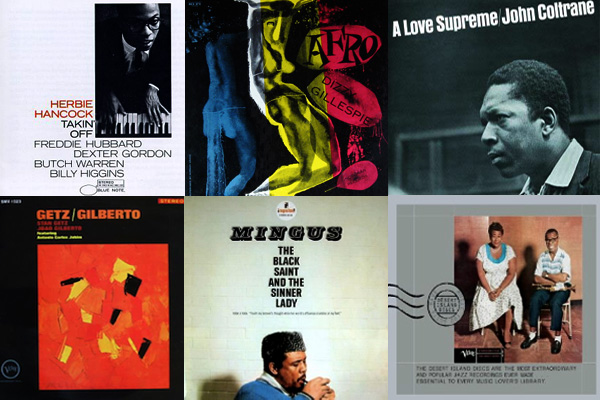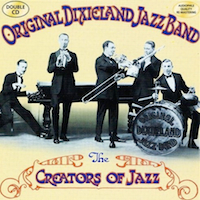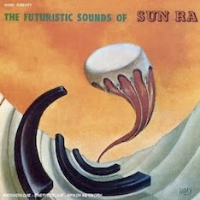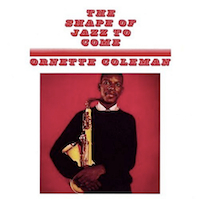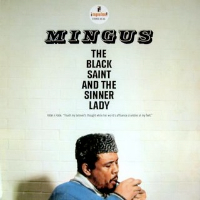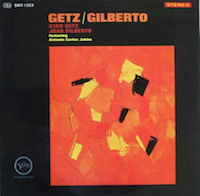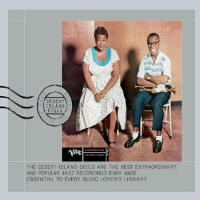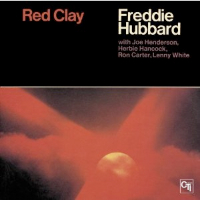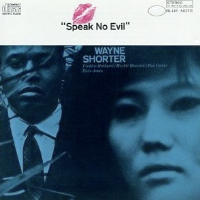Written by Ben Rimmer and Paul Sullivan
From: http://matadornetwork.com/
As music genres go, jazz tends to polarize listeners more than most.
For every hep cat that loves to slip into a
jazz trance there’s someone clasping their hands over their ears and screaming “switch that shit OFF!”
We at Matador do not fear the jazz. On the contrary, we love it. Here are 25 albums we’d recommend you own.
The Original Dixieland Jazz Band – The Creators of Jazz (Avid, 2001)
The Original Dixieland Jazz Band was the first jazz ensemble to record and make nationally distributed records. With a mix of European harmonies and rhythms from Africa, jazz entered national US consciousness via this (mostly) white band playing African-American music. This compilation features the widely regarded first jazz single “Livery Stable Blues,” and is currently the best collection of their early period (1917-1923) and “re-union” sessions in 1936.
John Coltrane – A Love Supreme (UMG, 1964)
A Love Supreme is one of the most important records ever made. Perhaps Trane’s pinnacle studio recording, it’s at once demanding, concise, technically perfect and a best seller. With the classic quartet of Elvin Jones, McCoy Tyner, and Jimmy Garrison this three part album should feature in every music fan’s collection.
Sun Ra – The Futuristic Sounds of Sun Ra (Savoy, 1961)
The Futuristic Sounds of Sun Ra is the first recording the Arkestra made after arriving in New York (comprised of seven main instrumentalists) still playing the bop-style music characteristic of the Chicago years (1954-1961). This is one for the mistaken folks who think the Arkestra did nothing but make noise.
Miles Davis – Kind of Blue (Columbia, 1959)
Note-perfect and universally loved, even by non-jazz fans, this is an artistic highlight for Davis and perhaps the definitive jazz record – bittersweet modal
jazz influenced by Bill Evans, yet utterly unique. An exceptional band of Miles, Coltrane, Bill Evans, Cannonball Adderley, Paul Chambers, and Jimmy Cobb can claim to be one of the greatest in history playing at their absolute peak. A timeless staple for any jazz collection.
Polar Bear – Held On The Tips of Fingers (Babel, 2005)
Twice nominated for the UK Mercury Prize, Seb Rochford is a genre-spanning musician whose band Polar Bear made a modern jazz classic in 2005. The recording encompasses straight jazz, hard bop, elements of electronic experimentation, and Balkan melancholy. An important and influential band leader and a record to match any modern jazz recording.
Ornette Coleman – The Shape of Jazz to Come (Atlantic,1959)
A watershed moment in the birth of avant-garde jazz, this record shattered traditional concepts of harmony in jazz, getting rid of not only the piano player but the whole idea of concretely outlined chord changes. With little predetermined harmonic structure Coleman and partner Don Cherry had unprecedented freedom to take the melodies wherever they felt like going. Avant-garde jazz begins here.
Moondog – Sax Pax For a Sax (Atlantic, 1997)
The New York street musician returned after a twenty year recording break with this joyous piece of avant jazz. Recorded in his eighties, the creativity and talent of this madcap genius shines through on tracks that span bebop, baroque, big band, and Miles Davis. Recalling his 1969 Moondog album, where his crowning moment “Bird’s Lament” appears, this surprising jazz explosion is as good an introduction to Moondog as any.
Keith Jarrett – The Köln Concert (ECM, 1975)
These live solo improvisations from the soulful and playful pianist recorded at the Cologne Opera House is enduring because of the spontaneous melodies and compositions as well as its cultural importance. Jarrett avoided neo-trad and avant-garde to bring a quiet lyricism to improvised jazz, inspiring those who had previously felt excluded. Every ’70s college student owned this captured moment in time, which perfectly showcases Jarrett’s overflowing inspiration.
Charles Mingus – The Black Saint and the Sinner Lady (impulse!, 1963)
One of the greatest achievements in orchestration by any composer in jazz history. This six-part suite composition is as much a stage for the bassist’s wild passions and changing moods that as it is a conceptual piece. The first jazz album to rely on overdubbing technology, it is one of the high points for avant-garde jazz composition in the ’60s and perhaps Mingus’ greatest work.
Charlie Parker & Dizzee Gillespie – Bird & Diz (Clef, 1952)
On June 6, 1950, Charlie Parker chose to play with fellow bop creators Dizzy Gillespie and Thelonious Monk. A striking reunion with the trumpeter and the only occasion on which Parker recorded with the pianist, the trio is in brilliant form, with Parker and Gillespie spurring one another to heights that range from the warm to the electric. Bird’s ideas flow with characteristic ease and swing while Gillespie sparks and flares.
Herbie Hancock – Takin’ Off (Blue Note, 1962)
Hancock’s first recording as a leader revealed a composer and pianist able to balance sophistication and accessibility. Including the world-famous Hancock signature tune “Watermelon Man,” it is an exceptional first effort that defines the hard bop and funk of the preceding few years whilst laying the groundwork to begin pushing the boundaries of hard bop.
Stan Getz – Getz/Gilberto (Verve, 1963)
One of the biggest-selling jazz albums of all time brought together two of bossa nova’s greatest innovators – Joao Gilberto and Antonio Calos Jobim – to record with Stan Getz. This recording made bossa nova a permanent part of the jazz landscape with stunning beauty and one of the biggest smash hit-singles in jazz history, “The Girl From Ipanema.” A rare jazz record where the purists and buying public are in total agreement.
Horace Silver – Horace Silver & The Jazz Messengers (Blue Note, 1955)
A classic album in the establishment of the hard bop style, this record found pianist Horace Silver and drummer Art Blakey co-leading the first outing for the tight-knit Jazz Messengers. Mixing funky bebop with blues and gospel influences, some of Silver’s most successful tracks feature including original versions of “The Preacher” and “Doodlin’,” which helped launch and sustain the hard bop movement and Silver’s Jazz Messengers.
Ella Fitzgerald & Louis Armstrong – Ella and Louis (Verve,1956)
The first of three recordings released by this incomparable pair, these eleven sweet and celebratory ballads are first rate, the vocal duets as easy and special as you could hope. Accompanied by the Oscar Peterson Trio and Buddy Rich on drums, universally loved popular standards include “Moonlight in Vermont,” “A Foggy Day,” and “Cheek to Cheek.” The follow-up
Ella and Louis Again may be even better, but this was the debut that finally brought Satchmo and Lady Ella together in the ultimate and longed-for jazz collaboration.
Louis Armstrong & Duke Ellington – The Great Reunion (Roulette, 1961)
Another monster collaboration between two of jazz music’s most important figures, this is a recording that almost manages to live up to the obviously unachievable expectations placed upon such a historic meeting. The album is wonderful by any standard. Later re-issued with
Together for the First Time in the two-album compilation
The Great Summit: The Master Takes on Blue Note, Ellington’s compositions including “Mood Indigo” allow Satchmo space for expansive improvisation while Duke plays some of his most sensitive and beautiful piano ever recorded.
Erroll Garner – Concert by the Sea (Columbia, 1955)
This live recording from Carmel, California with his trio shows off Garner’s spontaneity and unique delivery on the piano; the rhythms and use of tension and release were perfectly captured. Featuring Eddie Calhoun on bass and Denzil Best on drums it’s Garner’s inventiveness and natural talent that makes this album among the finest he ever made, even his greatest moment, despite using sound equipment that doesn’t do this virtuoso true justice.
Freddie Hubbard – Red Clay (CTI, 1970)
This record is trumpeter Hubbard’s finest moment as a leader, embodying all of his strengths as a composer, soloist, and frontman. His first album on Creed Taylor’s CTI, it signified a shift away from his Blue Note bebop towards the soul-jazz fusion of 1970s. Also harking brilliantly to hard-bop’s bluesy past and soulful mainstream jazz of the 1960s the Hubbard’s all-star jazz band of Herbie Hancock, Joe Henderson, Ron Carter, and Lenny White help the highly influential Freddie to create a true classic of the genre.
Grant Green – Idle Moments (Blue Note, 1964)
Jazz guitarist Green’s slow and seductive
Idle Moments may be his best performance on record. The 15 minute blues title track sums up the pace, yet it is actually a highly accessible work of special, career-high performances. With straight jazz and some of the most brilliant guitar jazz of the hard bop era taking centre stage, this is the ideal place to discover Green.
Wayne Shorter – Speak No Evil (Blue Note, 1964)
One of the leading American jazz musicians of his generation it was this record of highly original and unusual compositions that truly rubbished claims that he was merely a talented Coltrane copycat. This hard bop classic took Shorter out of the shadows of Trane and Miles Davis (with whom Shorter played and composed for six years until 1970) when this record was eventually recognized as Shorter’s masterpiece.
Dizzy Gillespie – Afro (Verve, 1954)
Alongside Charlie Parker, Dizzy was a major figure in the development of modern jazz as well as defining the early Afro-Cuban jazz sound. With Cuban arranger/composer Chico O’Farrill, Gillespie produced this brilliant session that originally made up the first half of a Norgran LP. O’Farrill conducts an expanded orchestra which combines a jazz band with a Latin rhythm section. The mix of straight jazz and exotic Latin rhythms is infectious and has proven highly influential.
Art Blakey and the Jazz Messengers ‘Moanin’’ (1958)
This is some of the greatest music Blakey produced in the studio with perhaps his finest band. The title track is one of a number of classic tracks used and played constantly around the world today, as well as jazz standards “Blues March” and “Along Came Betty.” This is the very best of Blakey and what modern jazz offered in the late ‘50s and beyond, confirmed by the Grammy Hall of Fame induction for the album in 2001.
Chet Baker – Chet Baker Sings (Pacific Jazz, 1956)
Baker’s singing was revolutionary and it was this record that both raised his profile and alienated traditional jazz fans with its West Coast LA swing, his singing as delicate and clear as his trumpet playing. He didn’t sound like any previous jazz singer. These sweetly melancholic standards such as “My Funny Valentine” are major classics of West Coast cool jazz and the best introduction to the original beautiful man and his music.
Miles Davis – Bitches Brew (Columbia, 1970)
This album is where Davis brings a looser rock-inspired sound, influenced by Sly Stone and Jimi Hendrix, to spark the jazz-rock movement. One of the most revolutionary jazz albums, these six spliced jams were so forward thinking that the record still sounds fresh in the 21st century. His first million-selling gold record is not only a jazz great, but also a major influence on a generation of rock and funk musicians.
Wynton Marsalis – Think of One (Columbia, 1983)
With this recording, New Orleans trumpeter Marsalis won both classical and jazz Grammys. Claiming jazz lost its way in the experiments of the ’60s and ’70s, Marsalis encourages a “neo-classical” movement with original ideas, spark, and brilliant playing. Though later efforts turned far more elaborate, this may well be his finest recording. His 1997 “Blood on the Fields” was also the first jazz recording awarded the Pulitzer Prize for Music.
Christian Scott – Anthem (Concord, 2007)
New Orleans trumpeter Scott has rightly been touted as jazz’s sharpest young star. In part an emotional response to the continued suffering of New Orlanians following Hurricane Katrina,
Anthem also reflects the emotions of romance and his maturation as a musician in the year following his Grammy nominated debut, “Rewind That.” His desire to move jazz in a new direction, incorporating blues as well as
hip hop and indie rock, is brilliantly captured. This is a fresh statement that manages to remain faithful to tradition.
